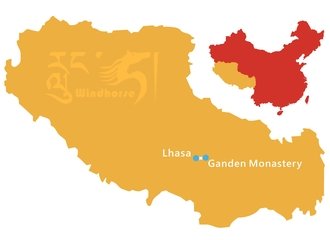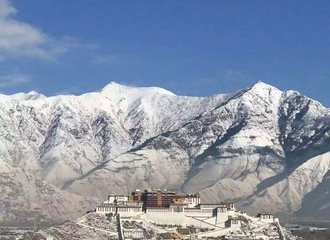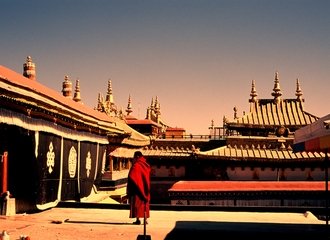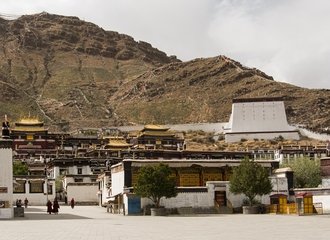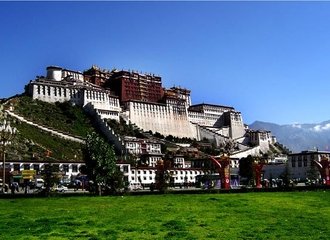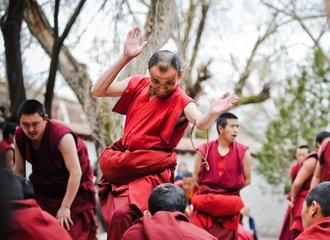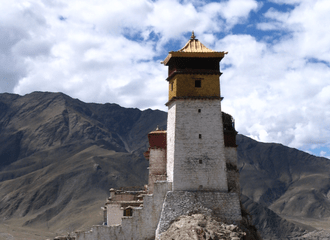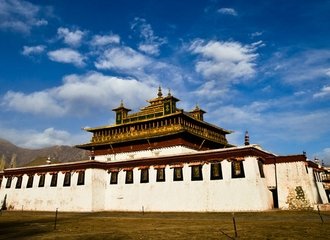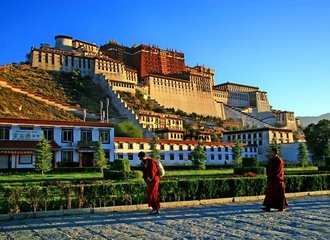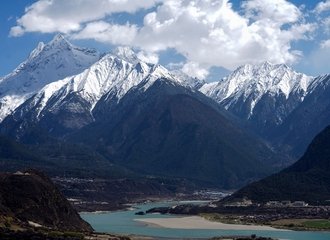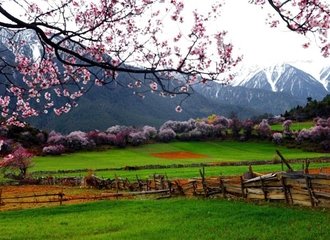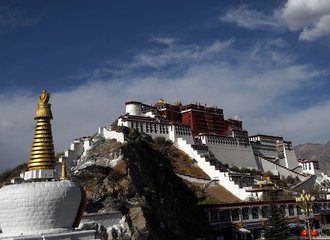50 Things To Do in Tibet, Top Tibet Tourist Attractions
When someone mentions Tibet, they probably imagine Mount Everest, the cold weather, Tibetan flags, and Tibetan monks. However, Tibet has so much to offer and show its tourists. Tibet is not just about mountains and harsh weather; in fact, it is a unique region filled with crystal-clear lakes, green landscapes, kind people, amazing traditions and culture, and yes, the magnificent mountains.
Among the natural beauties and attractions to see, there are numerous festivals worth visiting in Tibet, which provide truly once-in-a-lifetime experiences.
There is no person on this planet who has been to Tibet and not been amazed by the simple colorful life and the beauties witnessed during the trip.
We are delighted to showcase all the beautiful things and attractions you can see and experience in Tibet, bringing you closer to this breathtaking and distinctive region. Once you have finished exploring some of these 50 Tibet attractions, you might want to learn how to travel Tibet.
Here are 50 things to do in Tibet:
#1 Everest Base Camp (North Face)
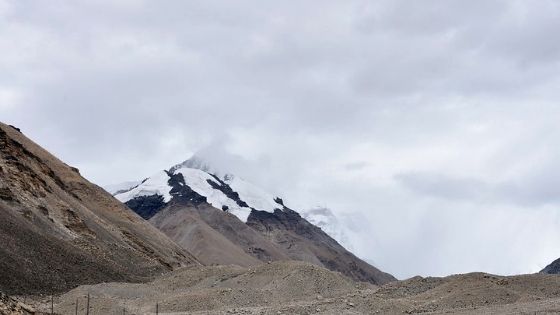
One of the main reasons why tourists visit Tibet is to experience the awe-inspiring Everest Base Camp. With its stunning views of the Himalayas, a visit to EBC promises a truly once-in-a-lifetime experience.
Did you know that Mt. Everest has two base camps? One is located in Nepal, while the other is situated in Tibet. The Tibetan side of Everest Base Camp, known as the north side, is positioned at an altitude of 5200m (17,056ft).
To reach EBC, the most popular way is by car from Lhasa. The journey takes approximately two days with some stops along the way. This route allows you to enjoy the scenic beauty of the Tibetan landscape as you make your way to EBC.
Alternatively, you can choose trekking to EBC from Old Tingri, a small Tibetan town located on the Tibet Nepal Friendship Highway. Trekking provides a more immersive experience, allowing you to fully immerse yourself in the stunning natural surroundings.
For those seeking a more adventurous approach, cycling or motorbiking to EBC are also options to consider. These modes of transportation offer a unique and thrilling way to explore the region.
The best time to visit Everest Base Camp in Tibet is typically from mid-April to early June and from September to October. During these periods, the weather conditions are more favorable, and the chances of clear views are higher.
#2 Potala Palace
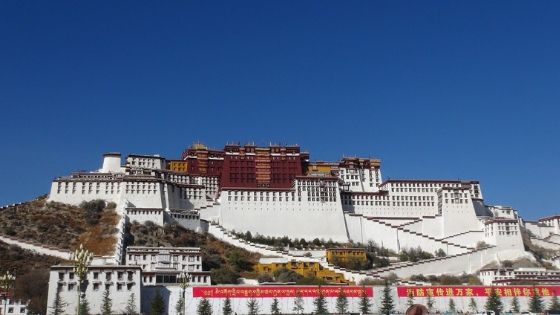
Potala Palace is a must-visit attraction in Tibet that should be included in every traveler's itinerary to Tibet.
Potala Palace is located in Lhasa, the capital city of Tibet, at an elevation of 3,750 meters (12,300 feet). It holds the distinction of being the highest ancient palace in the world.
The construction of the palace was completed in 1645, and it boasts more than 1,000 rooms, covering an area of over 13 hectares (32 acres). Potala Palace's grandeur and historical significance make it an iconic symbol of Tibetan culture and heritage.
Visitors to Potala Palace can explore its ornate halls, intricate murals, and sacred chapels, immersing themselves in the rich history and spirituality it exudes. The palace houses a remarkable collection of artifacts, including Buddhist statues, ancient scriptures, and captivating Tibetan artworks.
Potala Palace is open to visitors throughout the year, and there is no specific period that is considered the best time to visit. However, please note that the tour time inside the palace is limited to one hour.
#3 Jokhang Temple
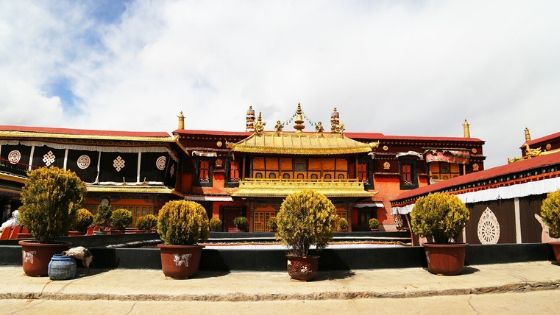
Jokhang Temple is the holiest destination for all Tibetan pilgrims, but it also is the most sacred place in Tibet. It is located in the center of Lhasa, and it covers 25,100 square meters, which is about six acres.
In Jokhang Temple, you will see the greatest treasure of the temple- The Jowo Rinpoche, and also various statues of Buddha and murals.
In 2000 is Included on UNESCO's World Heritage list in 2000 as part of the Potala Palace.
#4 Barkhor Street & Circuit
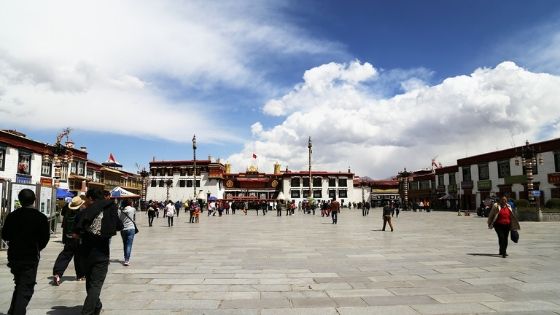
Barkhor Street is an ancient round street that is surrounded by The Jokhang Temple. It is located in the old area of Lhasa.
If you want to feel the magnificent spirit of traditional Tibet, then you must visit Barkhor Street. On the street, you will meet a lot of pilgrims who walk clockwise all day long. One of the oldest and most venerated rituals is the Barkhor Kora, where you can see the devoted pilgrims circuit around the exterior of the old temple.
Also, it is a great place to buy some souvenirs to bring to your home.
#5 Mount Kailash

Mount Kailash is the most sacred mountain in Tibet. And it is not holy just for Tibetans, it is for four religions: Buddhism, Hinduism, Bon, and Jainism.
The most exciting fact for tourists is that a human never climbs this sacred mountain, and even it is not the highest mountain in the region.
The best way to visit Mount Kailash is to trek. While trekking will allow you to merge into a unique region, you will also find pilgrims praying on the sacred mountain.
#6 Namtso Lake
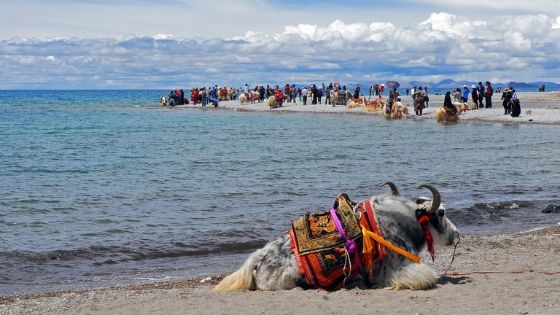
Namtso Lake in the Tibetan language means "Heavenly Lake," and it is one of the three holy lakes in Tibet. The other two are Lake Manasarovar and Yamdrok Lake.
Namtso Lake is the lake with the highest altitude in the world, the second-largest saltwater lake in China, and the biggest in Tibet.
If you are planning to travel in Tibet, you should definitely put Namtso Lake on the list of must-see things.
#7 Sera Monastery Monks Debate
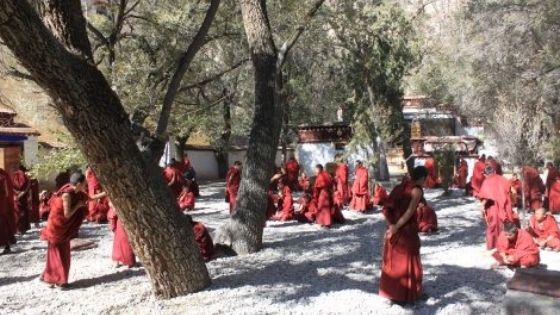
Sera Monastery is a must-visit attraction in Tibet, not just because it is one of the three famous monasteries, but also for the amazing things that you can see inside, such as the Monks Debate. It is located at the foot of Tatipu Hill in the northern suburb of Lhasa. If you want to be part of the unusual debate in the monastery you can visit every day from Monday to Friday at 3 p.m. The discussion of the lamas usually lasts about one hour and a half.
#8 Yamdrok Lake

Yamdrok Lake is one of the three holy lakes in Tibet. It is a freshwater lake with an area of about 638 square kilometers (about 246 square miles), and it is over 72 km (45 miles) long.
It has incredible scenery. Snow-capped mountains surround it, and because of its depth, the blue water makes the landscape more attractive for tourists.
The best time to visit Yamdrok Lake is from May to June and September to mid-November.
#9 Qinghai Tibet Train ride to Lhasa
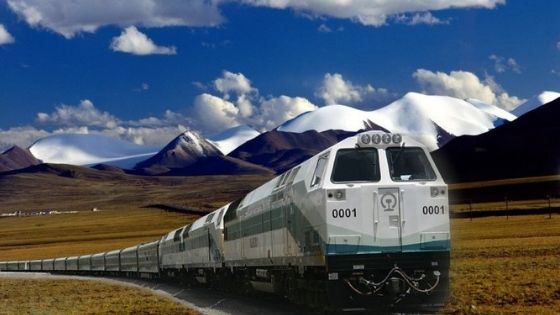
Traveling from Mainland China to Lhasa with the Qinghai Tibet Train is the most amazing experience that you can have on your trip.
Qinghai Tibet Railway is the highest railway in the world, and the highest point is Tanggula Pass, with an elevation of 5,072 m (16,640 feet). The Tibet train is connecting Xining, Qinghai Province, to Lhasa, Tibet Autonomous Region of China. Depending on which city you are starting your journey, you will need to spend between 21-53 hours on the train. However, you will be able to see markable scenery on the way.
#10 Gyantse Palkhor Monastery and Kumbum
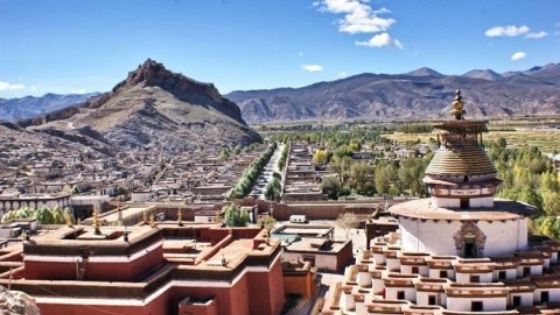
Constructed back in 1414, the Palkhor Monastery is one of the leading attractions in Gyangze County. One of the most distinctive factors about this monastery is the Buddhist Stupa, also known as Kumbum in local Tibetan culture. It is like taking a step back in time as you get to explore centuries-old architecture. A battlement wall surrounds the temple, and the whole place gives off a very colorful feel.
#11 Manasarovar Lake
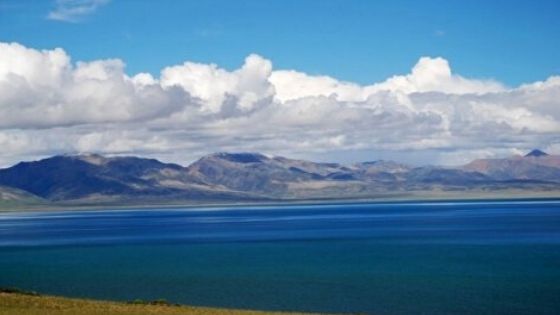
Lake Manasarovar is located at the foot of Mount Kailash, and it is one of the most sacred lakes in Tibet. It is a freshwater lake, with its altitude of 4,588 meters (15,049 feet) is one of the highest freshwater lakes in the world.
If you decide to visit this amazing holy lake in summer or autumn, you will meet a lot of pilgrims who circumambulate the lake for a circle to get immeasurable merits and profound knowledge. And they are also taking a bath in the lake to wash their sins away.
Lake Manasarovar is another must-visit attraction in Tibet.
#12 Drepung Monastery
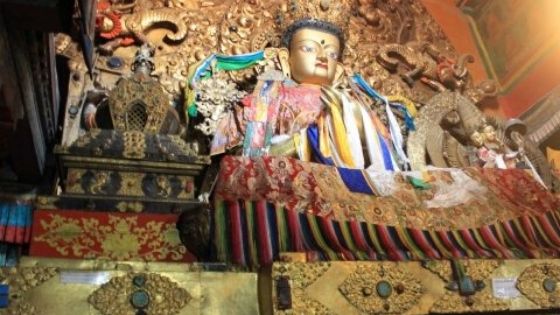
Drepung Monastery is situated right at the base of Mount Gephel and is regarded as one of the great three monasteries in Tibet. Being the largest of all the monasteries in Tibet, it is situated right at the base of the Gambo Utse Mountain. It was founded in 1416 and houses more than 7,000 monks. Thankas are painted on the walls, giving it a very cultural and unique feel.
The best time to visit Drepung Monastery is from March to October.
#13 Norbulingka Palace
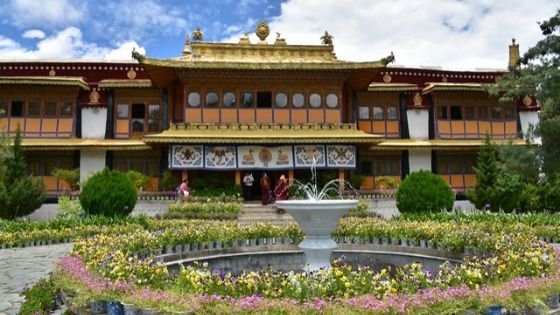
Norbulingka Palace is the biggest garden in Tibet, and it is located in the western suburb of Lhasa, at the bank of the Kyichu River. The garden covers an area of 360,000 square meters (about 430,000 square yards), and it has 374 rooms inside.
After entering this biggest human-made garden, you will feel the peace and tranquility, and you will want to stay as long as possible.
If you visit Lhasa in August, you can enjoy the Shoton Festival when people are gathering in Norbulinka to have a family picnic and enjoy the amazing Tibetan cham dance.
#14 Ganden Monastery & Kora
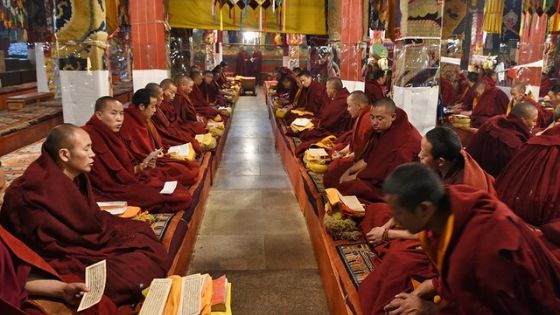
Ganden Monastery is regarded as the primary monastery of the Gelug School and is one of the Great Three Holy Monasteries of Tibet. It lies on the slopes of the Wangbori Mountain in northeastern Tibet. The monastery is artfully constructed, lying in a small natural depression in the countryside.
Many travelers take the Kora, which has two sections: the high Kora and the low Kora. They both offer absolutely stunning landscapes and views.
#15 Samye Monastery & Festival
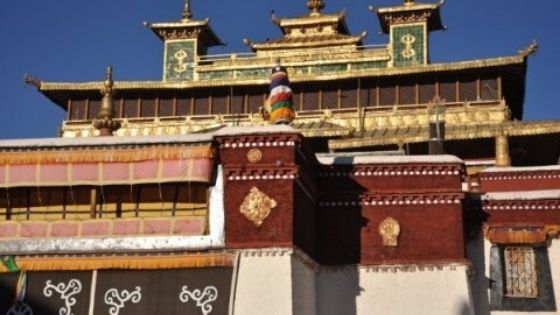
Samye Monastery is situated in central Tibet, right in the Mchims Phu valley, besides Hapori Mountain. The temple was constructed back in the 8th century, and even has a protective wall around it.
Many travelers prefer doing the Kora as they walk along the southern wall to Dawa Ling. There's an adequately constructed kora path too. It is a stunning monastery that gives you an insight into the history of the region. The festival date is the 15th day of the fifth Tibetan lunar month, and is celebrated with the cham dance.
#16 Drak Yerpa Caves
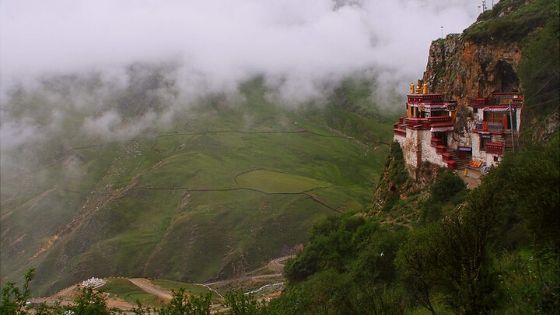
If you have an interest in Tibetan Buddhism, the Drak Yerpa Caves are one of the must see attractions in Lhasa. Situated around 16 km from Lhasa, this is one of the holiest retreats you can visit. Many famous Buddhists, including kings, have meditated in these caves. There are around 108 meditation caves in Drak Yerpa, so you have to manage your time accordingly. It's best if you take a day trip to the Drak Yerpa Caves.
#17 Yumbulagang Palace
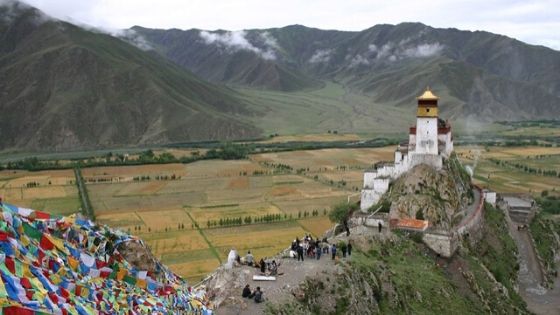
The Yumbulagang Palace is an ancient structure that stands tall in the Yarlung Valley. It is believed that this was the first building in Tibet, and the first king, Nyatri Tsenpo, lived here. The Palace is situated on the eastern bank of the Yarlung River, around 190 kilometers away from Lhasa. The Palace has undergone many changes. At one point in time, there was also a temple here, known as Lharu Menlha
#18 Tashilhunpo Monastery & Festival
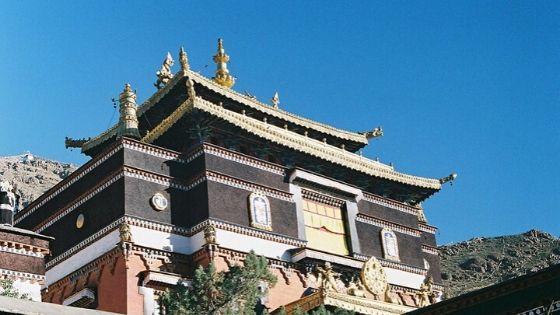
The Tashi Lhunpo Monastery was founded by the 1st Dalai Lama, back in 1447. It is situated in Shigatse, the second-largest city in Tibet, and is very important, both culturally and historically. It's situated on a hill right in the center of the city. While it has a tumultuous history, having been sacked many times, the Tashi Lhunpo Monastery is still a significant tourist attraction, with the Thangka Festival being held every year.
The festival date is the 15th day of the fifth Tibetan lunar month.
#19 Lunang Forest

Few places are as enthralling and as beautiful as the Lulang Forest. The forest is home to hundreds of different plant species. The forest is situated near the Sichuan Tibet Highway, and in the summer months, it turns into a garden with blooming flowers. The locals have wooden houses inside the forest, and they will even permit people to stay in them at times. It's a fantastic place that will really take your imagination to the next level.
#20 Guge Kingdom Ruins & Tsaparang

The Guge Kingdom was situated in the Garuda Valley, with Tsaparang serving as the capital. It was regarded as the highest kingdom in the world, and currently, the ruins are spread over an area of more than 200,000 square meters. With 879 caves, 445 houses, 60 blockhouses, and 28 pagodas for you to explore, the Guge Kingdom Ruins are really going to take you down the annals of history.
#21 Yak Butter Tea at Tibetan Teahouse

One of the most popular things that you should try on your trip to Tibet is Yak butter tea. Yak is the most common animal found in Tibet, and starting your day with a creamy bowl of yak butter tea at any of the Tibetan teahouses is an excellent idea. It's a fermented dark tea that's made with yak butter, milk curds, and toasted barley powder. Because the air is so thin, many Tibetans drink butter tea almost daily.
#22 Sakya Monastery
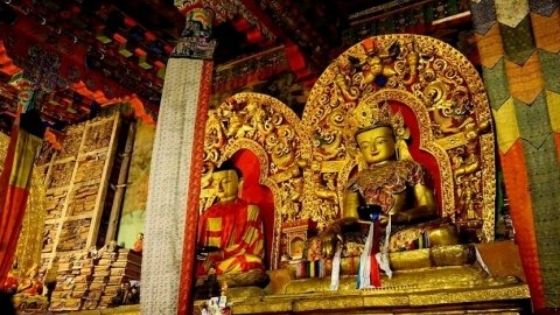
If your Tibet tour leads you to Shigatse, then you must visit Sakya Monastery. It is located under Mount Benbo in Sakya County, Shigatse Prefecture.
It is a Tibetan Buddhist Sakya temple and the main temple of the Sakya School.
Inside Sakya, you can see the countless murals, mostly of the Yuan dynasty (1271-1368). Among them, paintings of mandalas and former Sakya Throne Holders are the most outstanding.
Sakya's collection of valuables also contains 3,000 pieces of pattra sutras written in Tibetan, Chinese, Mongolian, and Sanskrit; and many other artifacts.
#23 Hanging prayer flags at a mountain pass
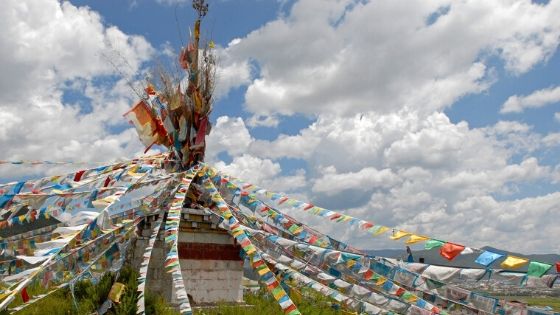
Prayer flags can be seen in many monasteries and pass throughout Tibet. It's a colorful rectangular cloth that is commonly seen strung on peaks and passes throughout the Himalayan Mountains. On your travels, you are going to visit many monasteries and mountain passes, and hanging a few prayer flags is an excellent idea. Primarily, they are used to bless the surrounding countryside in the region.
#24 Tibetan New Year (Losar)

Tibetan New Year is also known as Losar, and it is the most important festival in Tibet. The Losar starts on the first day of the first Tibetan month, but the Tibetans begin with preparations upon entering the last month of the Tibetan calendar. The first day of Losar is a day for the family, and they visit the monastery or temple. The second day is the day for relatives when they exchange gifts, and the third day is when the celebration starts.
To feel the real atmosphere, you should visit Lhasa. According to the Gregorian Calendar, Tibetan New Year in 2021 will begin on February 12.
#25 Shoton Festival
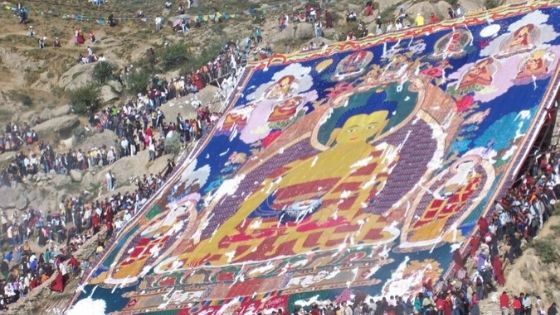
Shoton Festival is also known as the Yogurt Festival in Tibet. The celebration of this Tibetan festival is in summer, so many tourists can be part of it. The festival starts at the Drepung Monastery when the Thangka is unveiled. Then the celebration will begin at Norbulingka Palace.
People are gathering in the park, and they are eating yogurt and watching the operas. It is an excellent occasion for both locals and tourists.
#26 Saga Dawa Festival (at end of May to early of June)

Saga Dawa is celebrating the birthday of Sakyamuni, the Great Buddha, and the day he died and became a Buddha.
According to the Tibetan calendar, Saga Dawa Festival is celebrated on April 15. Local Tibetans are circling around Jokhang Temple and the Potala Palace, and also during this festival, many Buddhist pilgrims go to the sacred mountain Kailash Kora. The Kailash Kora or trek is three days. The locals even are hanging up their own prayer flags together with thousands of multi-colored flags. Each flag represents a prayer that someone wants to be fulfilled.
This year's Saga Dawa Festival, according to the Gregorian Calendar, is on June 5.
#27 Nagqu Horse Racing Festival in August
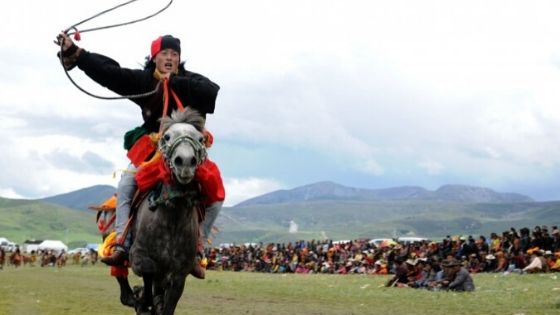
Nagqu Horse Racing Festival is one of the major three horse racing festivals for Tibetans. The other two are Yushu Horse Racing Festival and Litang Horse Racing Festival.
The Nagqu Horse Racing Festival takes place every year during the early to mid-August in Nagqu Prefecture, T.A.R. This time of year is ideal as the grasslands are lush, and the weather is favorable. It attracts locals and visitors alike, offering a unique opportunity to witness exhilarating horse racing competitions and immerse oneself in the rich Tibetan heritage. During the festival, the vast grasslands of Nagqu come alive with the sound of thundering hooves and the cheers of the spectators. Skilled riders from different regions gather to showcase their equestrian prowess in a variety of thrilling races, including flat racing, endurance races, and traditional Tibetan horsemanship demonstrations. Beyond the races, the festival offers a vibrant celebration of Tibetan culture, with colorful traditional costumes, lively dance performances, and music filling the air.
#28 Nyingchi Peach Blossom festival (in late March to early of Apirl)

While snow covers many parts of Tibet as spring approaches, Nyingchi emerges like a beacon of hope, draped in flowers. The Peach Blossom Festival has been held here since 2002 in order to celebrate nature. It's usually held sometime in March and lasts until early April. You can see the peach blossom in all its glory, and it's best to take a tour of the place so that you can explore Nyingchi in full.
#29 Gyantse Dhama (Horse Racing) Festival (normally in June)
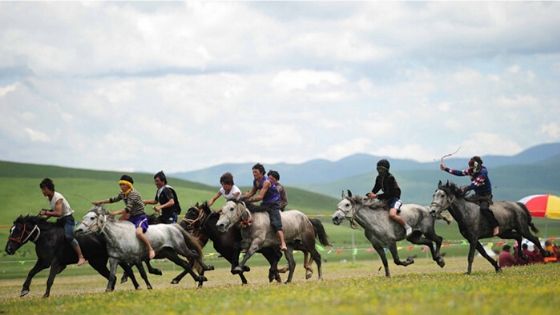
About 250 kilometers from Lhasa, in the gorgeous high-altitude countryside, ancient athletic contests are held in the fourth month of the lunar calendar. The Gyantse Dhama Horse Festival is said to have started back in the 1400s and has grown with time. It is now an important inter-village competition and attracts tourists and visitors from all over the region. If you are in Tibet, you should definitely consider checking it out!
#30 Mt. Kailash Pilgrimage (Kora)-Trekking
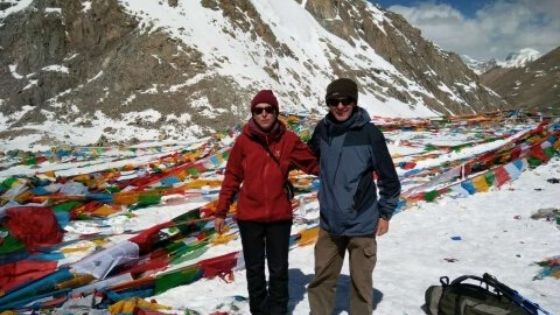
Mt.Kailash trekking is worth to be done even if you are not a pilgrim. It is also one of the most popular trekking routes in Tibet.
During the trek, tourists can see and visit other amazing attractions such as Lake Manasarovar and the Guge Kingdom.
There are two routes for the Mt. Kailash Kora: Outer Kora and Inner Kora.
The Outer Kora is more popular with tourists. It is about 56km, and it takes three days to finish.
The best period to do the Kora is from April to October. Or if you want to walk together with pilgrims, it will be best to book a tour during the Saga Dawa Festival.
#31 Ganden to Samye Trek
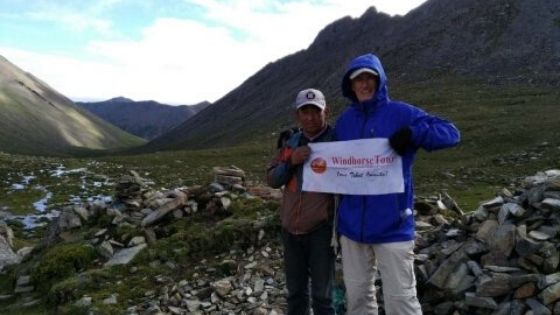
Ganden to Samye trek is one of the best trekking routes, according to the hikers. It is an amazing journey that will show you the real Tibetan culture and Tibetan Buddhism. During the trek, you will see some of the holy lakes, snow-capped mountains, a lot of Tibetan villages, and Samye Monastery.
The trek starts at Ganden Monastery at 4180m (13,940 feet), passing Shogu-La Pass at 5250m (17,224ft) and heading toward the Samye Monastery 3540m (11,600ft). Because of the high altitude of the route, it is advisable to have proper acclimatization for two or three days in Lhasa.
#32 Gama Valley Trekking

The Gama Valley trekking route is such a fantastic experience for those who want to be close to pure unique nature.
Gama Valley is situated in the Shigatse region, on the east slope of Mt. Everest. Gama Valley is part of the "Four Great Valleys" together with Gyirong Valley, Zhangmu Valley, and Ya Dong Valley.
The best periods to visit Gama Valley is from April to June and in autumn from September to October. In spring, you will have a view over the astonishing scenery when orchids are in full blossom.
#33 Tsurphu to Yangpachen Trekking
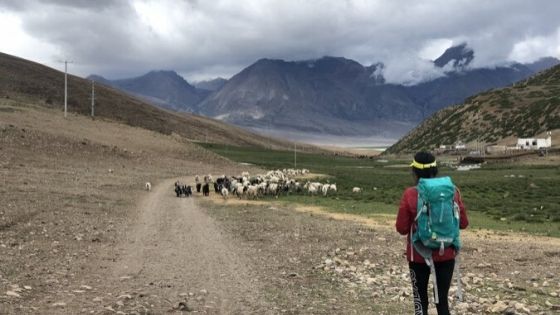
Tsurphu to Yangpachen trekking route is one of the most amazing short treks in Tibet. If you decide to take this trek, you will need to reserve only three days to finish the route, and it's about 45km (28miles). Along the route, you will meet Tibetan herders, and you will see their semi-nomadic lifestyle. The trek starts from Tsurphu Monastery at an altitude of 4.300 meters, and you will pass through unique areas, and you will not regret this journey.
#34 Tidrum Nunnery & Hotspring
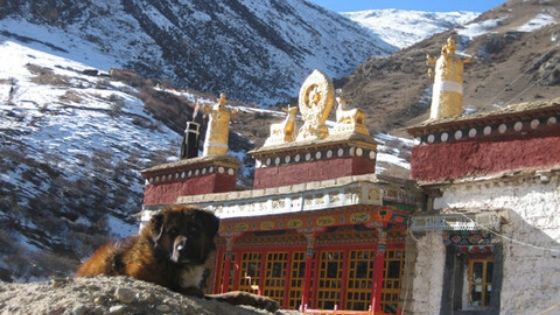
The Tidrum Nunnery is situated in a remote location in Tibet, near the Drijung Til Monastery. The valley is covered in prayer flags, and this small nunnery has become very popular because of the medicinal hot springs, also known as the Tidrum Hot Springs. Situated right at the confluence of the two streams, there's just a small wall separating the two pools. Take a bath in these hot springs and just let your body relax!
#35 Peiku-tso lake
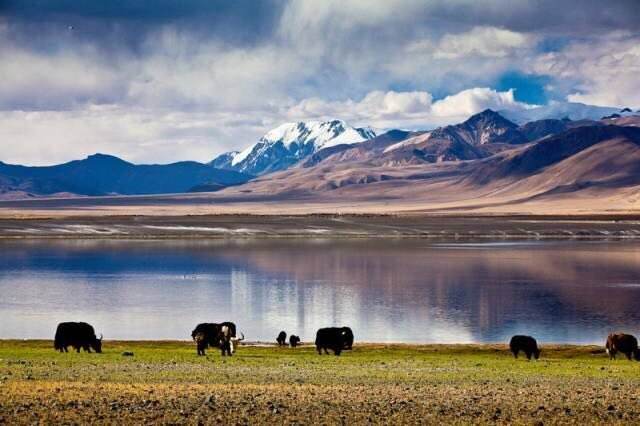
Peiku-tso lake isn't that famous like Namtso Lake or Lake Manasarovar for the tourists, but it is for sure one of the most beautiful lakes in Tibet.
It is located in Shigatse Prefecture, about 250 km from Tingri County, at an elevation of 4.590meters. This lake is the largest in Shigatse, and it covers an area of more than 300 square kilometers.
Three mountains surround the lake, and it has majestic scenery, especially in autumn.
#36 Tirthapuri Hot-Spring & Kora
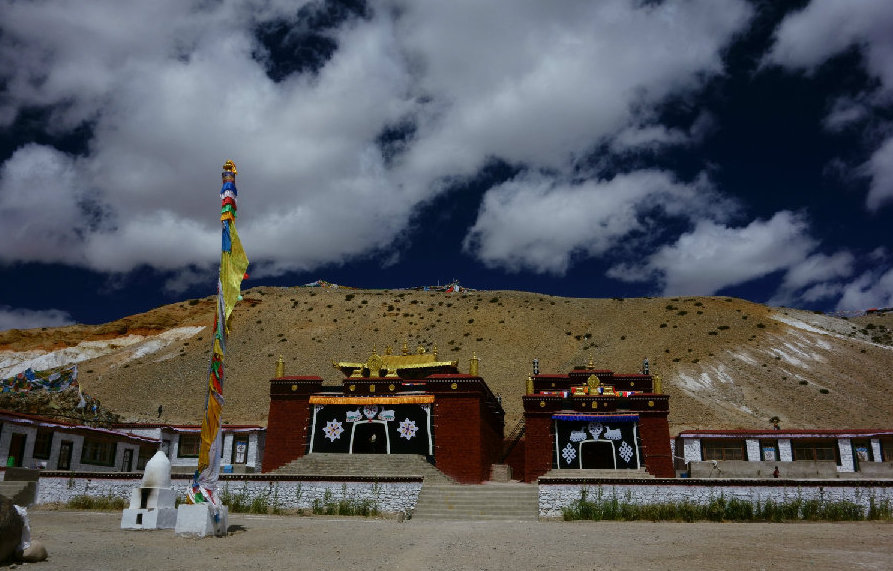
The Tirthapuri Monastery is one of the most important pilgrimage sites, after Kailash and the Lake Manasarovar. It's northwest of Kailash, and it is famous because of the hot springs located on the site. Many pilgrims visit this site after completing the kora at Mount Kailash. It is said to contain the footprint of Guru Rinpoche. The springs lie in the middle of the barren lands, though they are getting weaker.
#37 Rawok Lake

The Rawok Lake is near Sichuan- Tibet highway, and it is a frequent stop for the tourists who travel on this road. The lake is surrounded by snow-capped mountains and forests and verdant grassland, which makes the scenery so unique and peaceful.
The lake covers an area of 22,000 square km, and it lies at an elevation of 3,850 meters. North of Rawok Lake is the Lhegu Glacier, and every spring, when the ice melts, water flows into the lake, keeping the lake abundant.
#38 Tsurphu Monastery & Festival
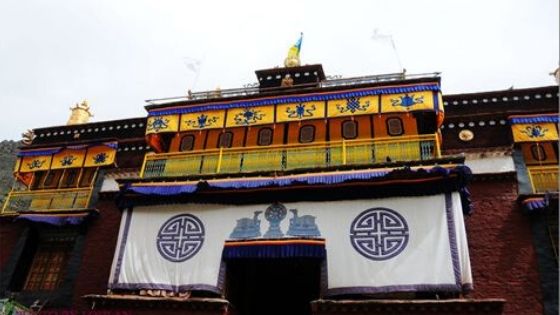
The Tsurphu Monastery is around 65 km from Lhasa and hosts the Karma Kagyu Cham dance, which is regarded as one of the most celebrated festivals all around Lhasa. The festival is held around Saka Dawa, usually in the fourth lunar month. When you visit, it's going to look like a great picnic, with colors everywhere. It's one of the best festivals that you will experience in Tibet.
#39 Draksum Tso Lake
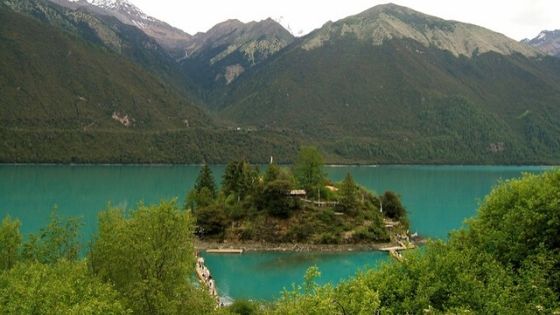
Draksum-tso lake is another must-visit attraction in Tibet. Undoubtedly is a lake with the most famous scenic spots in Tibet.
It is located in the Gongbogyamda County, at about 90 km away from the county seat Gorlingka and 120 km away from Bayi Town. It is very accessible to get there by car.
The lake is sacred for the local people. Every year, on the 15th day of the 4th month, according to the Tibetan calendar, the local people will hold a festival to circulate the lake.
#40 Dangra Yutso lake
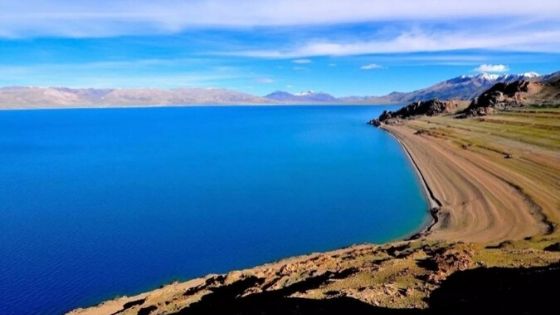
The Dangra Yutso Lake lies at the foot of the snow-capped mountains in Nyema County, Nagqu Prefecture of Tibet. It is a saltwater lake, and it has an altitude of 4,528 meters above sea level, with a total covered area of 835.8 square meters. It is considered to be one of the holy lakes in Tibet.
The best time to Lake Dangra Yutso is between July and September.
#41 Wenbu South village
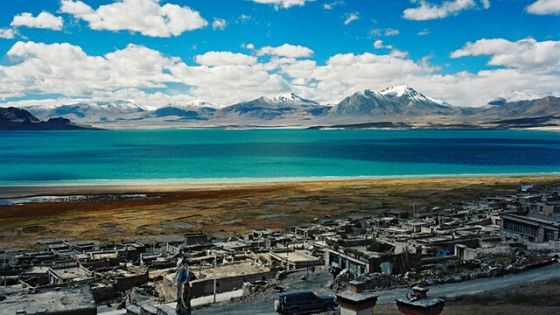
Wenbu South Village is situated in Nyima County, southwest China's Tibet Autonomous Region, at an elevation of 4,645 meters.
Near the village there is Tangra Yumco Lake, which is a holy lake of the Bön believers. Also the Buddhist Pagodas nearby the lake and the village makes the scenery more attractive for tourists.
#42 Changthang grassland
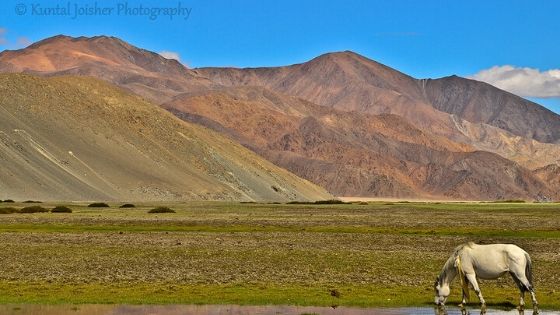
One of the most spectacular locations in Tibet is the Changtang Grassland. It's a part of the high altitude plateau that eventually flows into Ladakh, India. It's home to the Changpa, a nomadic group of people. With stunning lakes, grasslands, and animals, you are going to have an amazing time exploring the beauty of this region. The area is almost untouched, and you are going to see small huts dotted around the landscape.
#43 Siling Tso lake
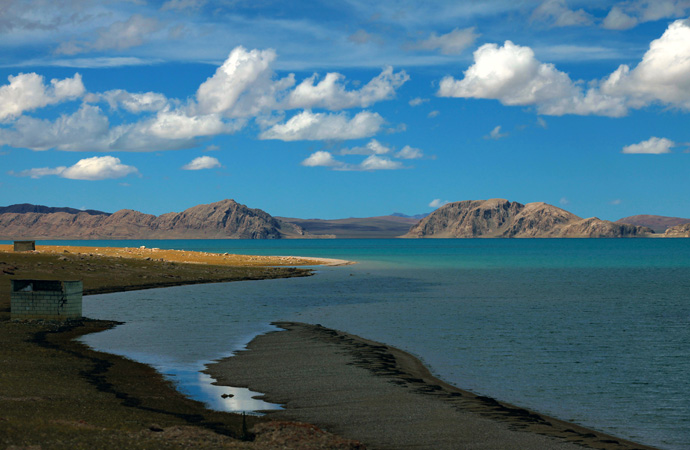
Siling Tso is the highest lake in the world and the second-largest in Tibet. It flows directly in the Yarlung Tsangpo River and is in a very rigid location. There is a legend surrounding the lake, where people believe a devil lived in the region, though he was trapped within the lake, which is why many people also refer to it as the Siling Devil Lake in local regions.
#44 Pangong-Tso Lake (between Tibet and India)

Pangong Tso, also known as the Pangong Lake, flows from Tibet to India, with 60% lying in Tibet. At its broadest point, the lake extends to almost 5 km. The distinctive factor about this lake is that the eastern part contains freshwater, while the western part contains saline water. Many animals, including ducks and gulls, can be spotted on the surface. Certain types of herbs also grow here.
#45 Midui Glacier
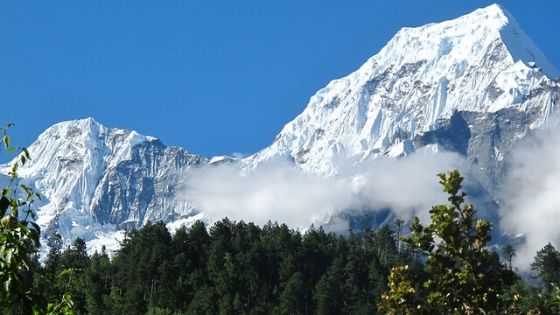
The Midui Glacier is regarded as one of the best glaciers in all of China. Situated in Yupu Town, the glacier is famous for its massive ice basin and the many snow avalanches. There are several hotels in Yupu Town where you can spend the night and explore the glacier during the day. However, because tourism is high, you should make a booking well in advance in the summer months.
#46 Riwoche Monastery
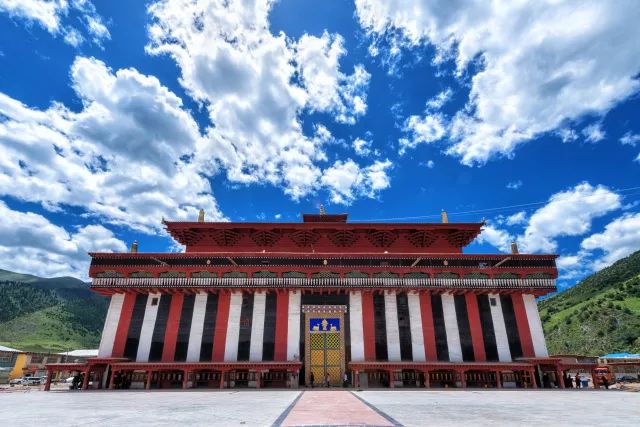
The Riwoche Monastery is around 30 km north of the small town of Ratsaka. It's situated in a fertile valley that contains the Dzi River. The major temple is spread over three stories and has been undergoing restoration and renovation since 1985. It was destroyed by communists, though it's steadily rebuilt. It's ancient and will give you an insight into the rich history of the region.
#47 Zizhu Monastery
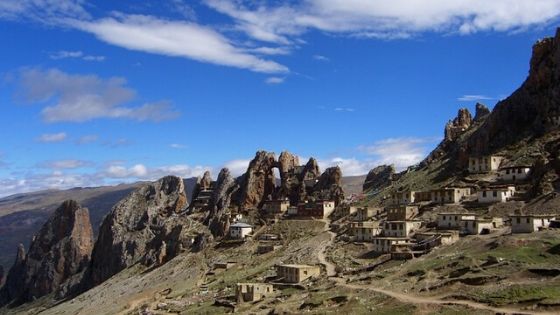
The Zizhu Monastery is one of the highest temples in all of Tibet. It's situated in the rocky mountains and follows the teachings and practices of Bon religion. The mysterious and highly unknown Bon yoga is still practiced in the monastery. It's an incredibly old temple that attracts visitors from all over the region. If you are in Tibet and looking to explore ancient monasteries, this should be on your list!
#48 Yangpachen hot spring
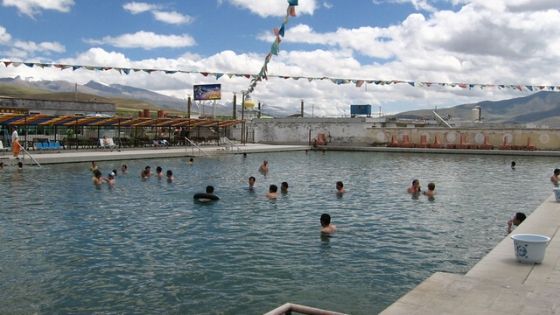
The famous Yangpachen Hot Springs lie on the Nyenchen Tanggula Mountains and are famous for the geothermal springs here. It's the first geothermal spot developed in all of Tibet and has become a top-rated tourist attraction. In fact, it's become the number one power source for many parts of Lhasa. It's an excellent place to visit for people who want to explore the geothermal scenery in Tibet.
#49 Tibet Butter Lamp Festival
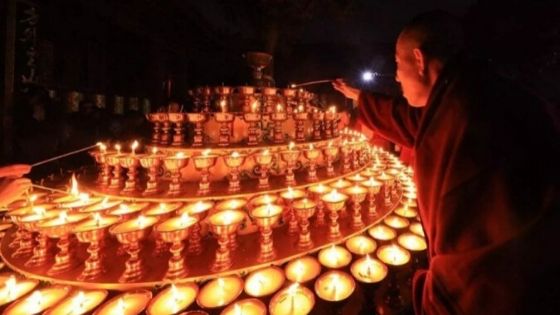
The Butter Lamp Festival in Tibet consists of lighting up butter lamps in order to celebrate the victory of Shakyamuni Buddha around 2,500 years ago. The festival is held in the first month of the Tibetan calendar, on the 15th day. Hundreds of butter lamps are lit up, and many sculptures are displayed around the hundreds of temples in Tibet. It's one of the fascinating festivals that you will see!
#50 Tibet Nomads
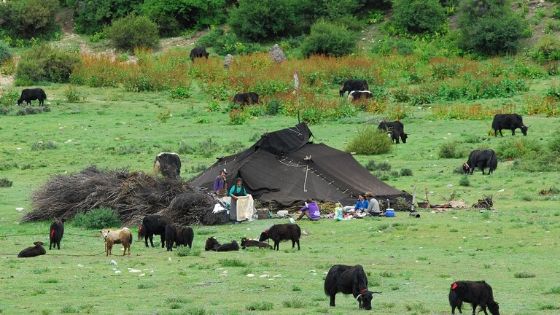
The vast and varied landscape of Tibet is home to thousands of nomads. Nomadic people move from one part of the plateau to another during the winter seasons, and then climb back up in the summers. They graze their animals in particular places, and during your travels, you are going to come across many nomadic tribes. All they want is to feed their animals and make a living for themselves!
#Tibet - So many things to do
If you like to travel, then we would suggest to put Tibet on your to do list. There are many things to do in Tibet, and each attraction that you visit will show you a unique perspective and value of the simple life that the Tibetan people are living.
Everyone needs to get away from the stressful and crowded cities, and journey into the peaceful.
Enter Tibet!


